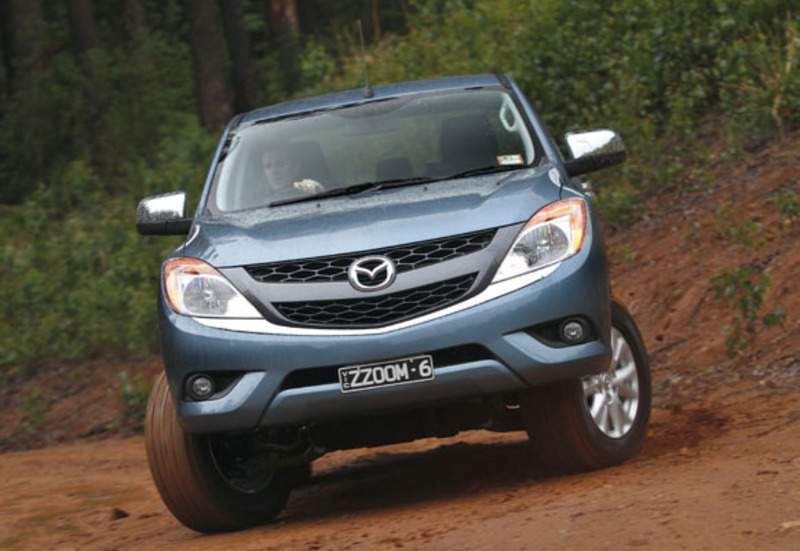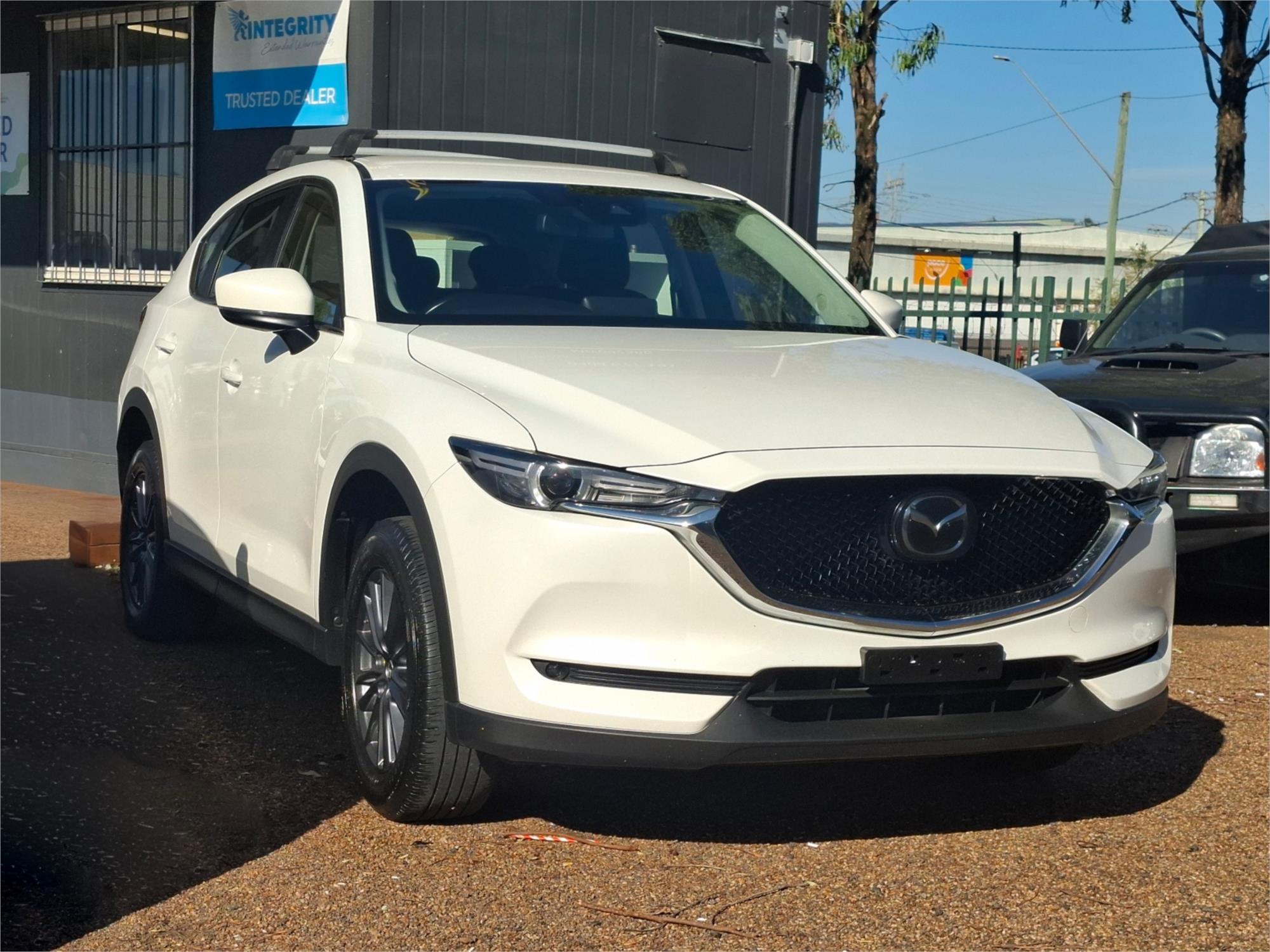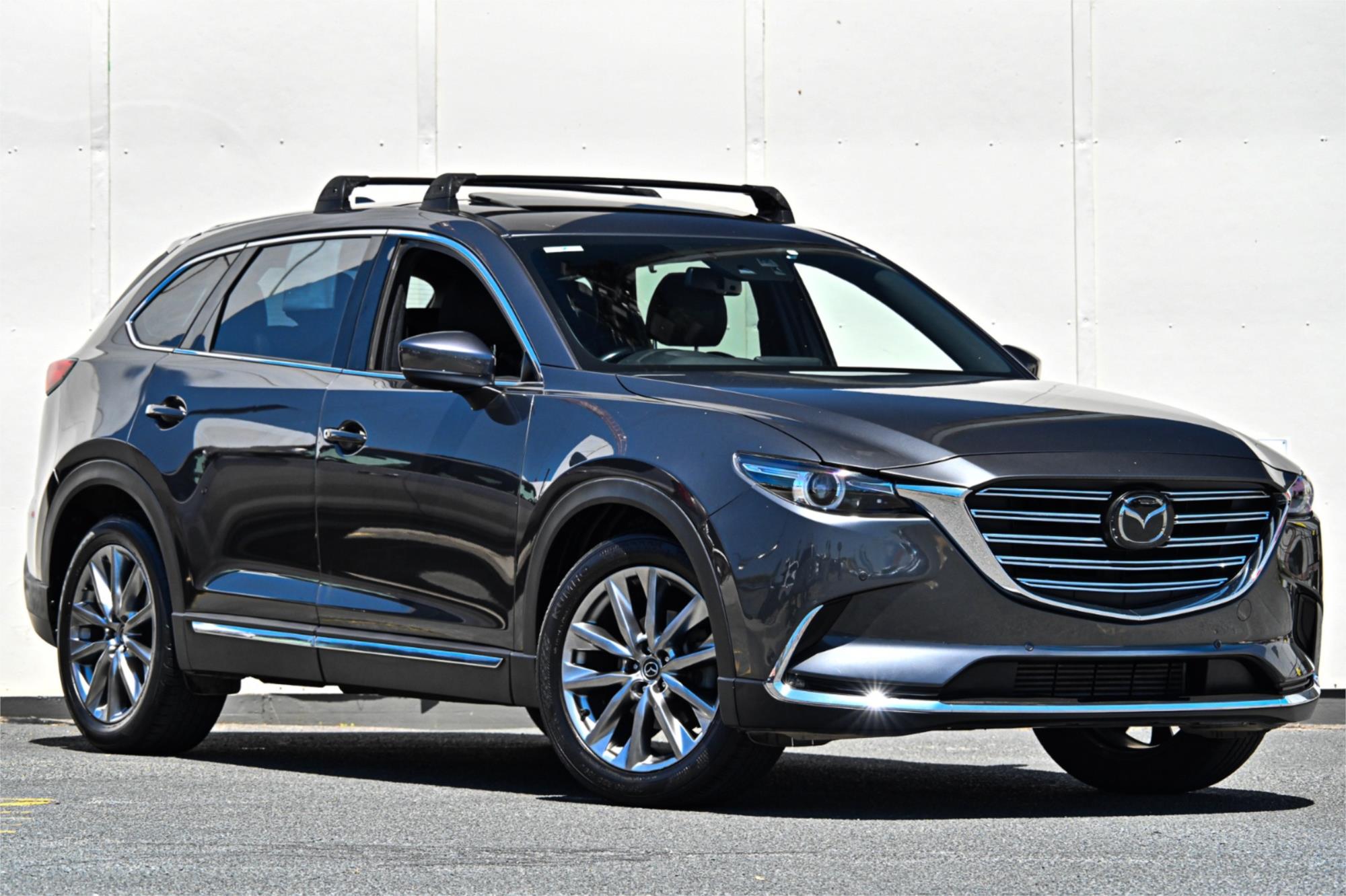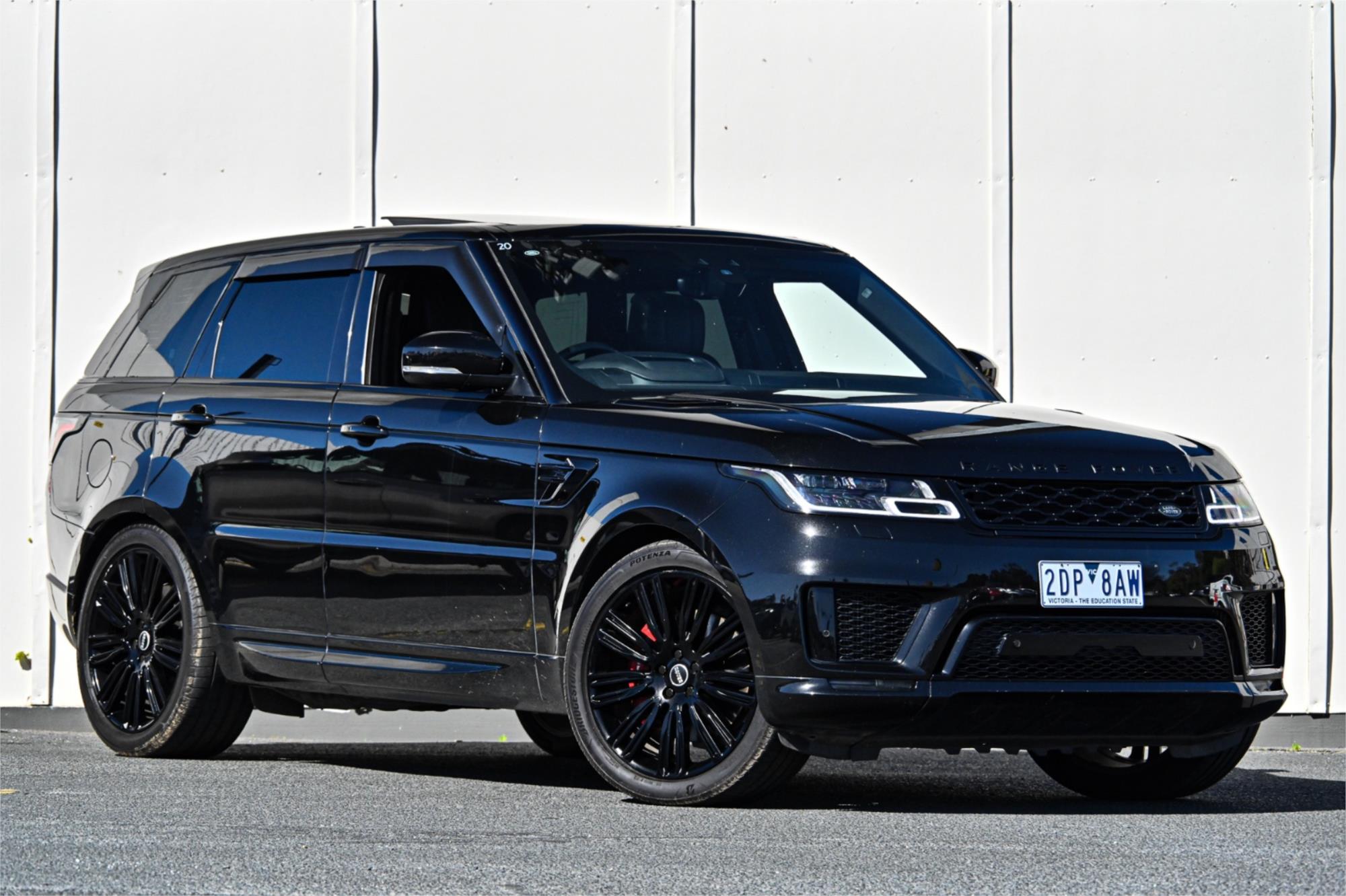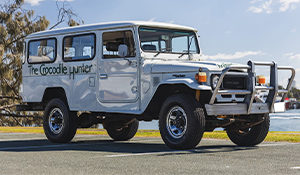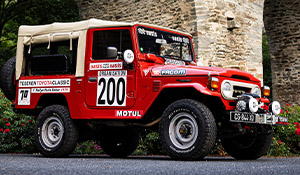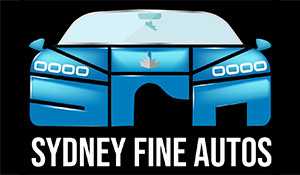2011 Mazda BT-50 review
The Thai-built and Australian developed utes are the result of a four-year program that saw Ford adopt the overall project-management role while Mazda was responsible for perfecting the rolling chassis and the prototypes.
At the height of the development program, Mazda had more than 50 engineers working at Ford's Cambellfield headquarters and at the You Yangs proving-ground facility in Victoria. Other testing was conducted in Asia, South America and Europe.
While the two companies clearly worked closely on the development of their two new babies, their respective approaches to engines and marketing thrust are quite different.
Mazda has a diesel-only BT-50 line-up while Ford continues with an entry-level petrol Ranger variant.
In terms of their marketing strategies, Ford has positioned the Ranger as very much a tough Ford truck. While Mazda also sees its new ute as equally tough, it will market the BT-50 as a versatile car-like recreational vehicle that can go just about anywhere but with the credentials to go up against mid-size SUVs.
The outgoing BT-50 was launched in Australia five years ago and with total sales since then of nearly 50,000 units, Australia has been the world's second-largest BT market.
Mazda Australia expects that we will become numero uno with the new model.
There are three different body styles - single cab, Freestyle cab and dual cab - and three model grades -- XT, XTR and GT - complete the line-up.
For the 2012 BT-50, buyers have the choice of two new in-line turbo-diesel engines - a 2.2-litre "four" and a 3.2-litre "five" - and they can be mated with equally new six-speed manual and automatic transmissions.
The single-cab version's 2.2-litre powerplant benefits from common-rail and variable-geometry technology and delivers 110kW of peak power at 3700rpm and a pretty impressive 375Nm of maximum torque between 1500 and 2500rpm. A six-speed manual gearbox is the only transmission and Mazda claims a combined fuel-consumption figure of 7.6-litres/100km.
The bigger of the two turbo-diesels also has common-rail injection and the same turbo technology and is good for 147kW of power at 3000rpm and a thumping 470Nm of torque that is on tap between 1750 and 2500rpm.
With this engine, buyers have the choice of the manual gearbox and a sequential-sports-shifting six-speed automatic. The fuel figures are 8.4-litres for the manual and 9.2-litres for the automatic.
The new Mazda ute rides on an independent double-wishbone/coil-over dampers front-suspension set-up with an anti-roll bar and a rear live axle with leaf springs. Stopping power comes via 16-inch disc brakes at the front and drums on the rear.
All 2012 BT-50s come with air-conditioning, Bluetooth mobile-phone connectivity, cruise control, an MP3-compatible CD player with USB input, steering- wheel-mounted audio controls, a trip computer and power windows and mirrors.
Additional new BT-50 features including satellite navigation, leather seats, an auto-dimming rear-vision mirror, hill-descent control and hill-launch assist.
In the safety department there is standard dynamic stability control, traction control, ABS brakes, emergency brake assist, electronic brake-force distribution and roll stability control.
The other good safety news is that Freestyle and dual-cab models are equipped with dual front, side and curtain airbags. This mix of safety kit puts the BT-50 right up there with its Ranger cousin and VW's new Amarok and ahead of most of the other players in this segment.
Freestyle and dual-cab models are powered by the new 3.2-litre in-line five-cylinder turbo-diesel engine that also powers the BT-50's Ford Ranger cousin.
There are three Freestyle cab models in the new BT-50 range starting with the 4x2 Freestyle cab/chassis XT that opens the pricing batting at $32,590. This jumps to $46,810 for the 4x4 XTR Freestyle ute.
Opt for a dual-cab version and $36,090 will get you into a 4x2 XT ute. The king of the dual-cab heap is the leather-trimmed GT 4x4 at $52,710.
Pricing of single-cab models will be released closer to an on-sale date that is likely to be late this year.
Mazda has also announced a range of accessories that includes steel or alloy bull bars, steel or alloy sports bars, steel or stainless-steel side steps, hard or soft tonneau covers, alloy wheels, a canopy, tub liners and Lightforce driving lights.
XTR and GT dual-cab 4x4 buyers can also choose a sports kit that includes an alloy, airbag-compatible bull bar, Lightforce Genesis driving lights, 17-inch seven-spoke alloy wheels, tubular, stainless-steel side steps that are airbag compatible, an alloy sports bar and a hard lockable tonneau cover.
The so-called Boss adventure kit packages a black airbag-compatible steel bull bar, the Genesis driving lights, 17-inch five-spoke alloy wheels, black airbag-compatible tubular side steps, a black sports bar and a soft tonneau cover.
During an extensive Canberra-based media-launch drive program we found the BT-50 dual-cab with its muscular 3.2litre turbo-diesel engine to be equally at home cruising a freeway as it was clambering up a seriously steep rocky track at an off-road driving centre.
The engine's torque delivery is really something special and what it will do in a gear that is one or two notches higher than you'd first think of selecting is amazing.
We drove both manual and automatic versions in a range of conditions and both do their work exceptionally well. Mazda has always produced excellent manual gearboxes and this one is no exception.
The stubby gear-shifter falls perfectly to hand and is fun to use and the automatic made things a lot easier in Canberra's traffic.
For a ute, the BT-50 is one of the quietest around and even the traditional diesel-engine rattle is hard to hear inside the cabin.
The seats are well shaped and bolstered and each seating position (other than the centre one in the rear) has a roof-mounted grab handle.
One major interior shortcoming - especially for someone of my 185cm height - is the lack of reach adjustment for the steering wheel. There's height adjustment but that's all.
When quizzed why reach adjustment was not part of the mix, BT-50 program boss Takasuke Kobayashi, who was in Australia for the local media launch, said he and his team felt that there was enough seat adjustment and therefore steering-wheel reach adjustment was not warranted. Wrong.
No matter how I tried I could not dial up a comfortable driving position - something that detracted from my overall enjoyment of the vehicle.
Off road the new Mazda can match it with just about anything with 4WD, and technical goodies such as hill-descent control and hill-launch assist ensure that you don't frighten the life out yourself or your passengers.
Mazda Australia is shooting for average monthly sales of around 1000 units, with the dual-cab version accounting for 60 percent of these. The single-cab figure is expected to be 25 percent, with the Freestyle cab accounting for the remaining 15 percent.
In summary, the 2012 BT-50 is vastly superior to its outgoing sibling - especially in the engine department.
While its CX-9-like frontal styling is sure to polarise potential buyers into "love it" or "hate it" camps, the Japanese brand's strategy of giving the new ute a persona that is clearly of part of the overall Mazda family certainly has merit.
Volkswagen has proved that.
Over the years, Ford's Ranger has consistently outsold the BT-50 by around a third.
It's going to be fascinating to see how things pan out with the new versions.
IAN CRAWFORD




